The science on suffering: Husbandry and close confinement
Poor husbandry in the circus may not be intentional, but it is to an extent unavoidable given the travelling nature of circuses and the temporary enclosures, living spaces and transporters that the animals have to inhabit.
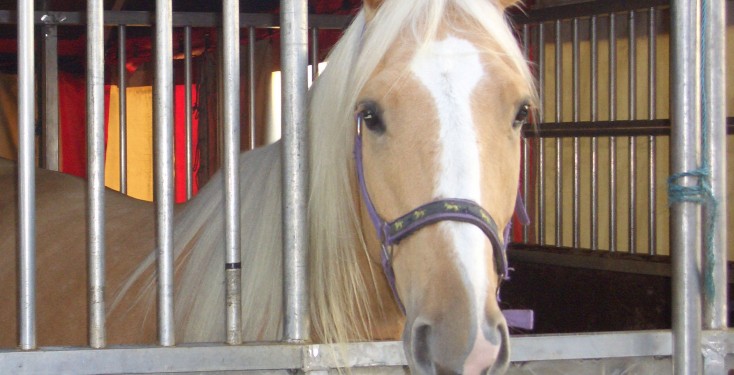
3. Husbandry and close confinement
Poor husbandry in the circus may not be intentional, but it is to an extent unavoidable given the travelling nature of circuses and the temporary enclosures, living spaces and transporters that the animals have to inhabit.
Even reptile species such as snakes, which are considered extremely difficult to keep as pets due to their highly specialised needs (such as specific temperature and light requirements) are currently legal in a circus.
The constant moving and changing environmental conditions cause disruption of normal behavioural patterns which are likely to leave animals inherently vulnerable to stress and disease. For example, McGreevy (2004) describes how the timing of sleep is very important in horses. By preference horses would sleep in the early afternoon and therefore it is generally advised that there should be a minimum of activity at this time. However in the circus, transport, training and performance do not take this into account.
| Excessive periods in transporters. Case Study: Zippo’s Circus. Observations 2 & 3 April 2006. Journey: Oxford to Blackheath, SE London. Actual journey time: 2 hours |
Zippo’s Circus transporter
| 4 horses, 3 ponies: Time spent on transporters (from being loaded to being unloaded), 4hrs 15mins and 4hrs 55 mins.This is not unusual: We reported in ‘Animals in UK Circuses’ (2003) that a journey of just 11 miles (Chiswick to Kingsbury) took 40 minutes, whilst the animals remained in their transporters for 2 hours and 12 minutes.It should be noted that ADI Field Officer timings are backed by contemporaneous notes, videotape and photographs.These timings do not support the statement by Zippo’s Circus, read to the House of Commons by Peter Luff, MP, on 14.03.06:“The practice at my circus is that after their last performance the 7 horses and ponies are loaded into their horse transporter and driven to the next venue. Since my circus travels mainly within the M25 these journeys are between 5 miles and 25 miles long and it is rare for journey times to be longer than one hour. The stables are then immediately erected at the new venue, in an area which has already been marked out for them. Erecting the stables takes less than an hour. The horses are then unloaded and stabled on clean bedding with fresh water and best quality hay. So the average journey time takes one hour, and the time the horses wait in the horse transporter while the stables are built up is less than one hour. The whole process is over in less than 2 hours.”ADI Statement about Zippo’s misleading claim regarding the ADI MORI opinion poll of October 2005:Zippo’s Circus has claimed both in the Houses of Parliament and in the media, that the ADI MORI poll of October 2005 has been withdrawn by MORI. This is not the case. MORI stand by their data and have issued a statement to this effect. |
| Horse & pony husbandry. Case Study: Zippo’s Circus. Observations 2 & 3 April 2006.4 horses, 3 ponies.Housing: Individual approx. 3 metres x 3 metres stalls inside a tent (tethered for at least part of this time). |
| There was no exercise enclosure present for the horses or ponies on either the 2nd or 3rd. On 6th April there was an exercise enclosure (approximately 35 by 10 metres) but no animals were seen to use it. During observations a year earlier, on 22 and 23 April 2005, no exercise enclosure had been provided.ADI has previously noted that circus exercise enclosures generally are not large or numerous enough (given the restrictions of individual sites) to allow all of the animals to be exercised each day. Our ‘Animals in UK Circuses’ (2003) report noted that during three days of observations at this circus, the exercise enclosures were not used at all. |
The problem with a travelling circus is that animals can remain tethered for long periods of time while workers are busy, or on breaks.
If it were just for a week, or in a permanent facility with scope for variation of environment, these stalls could be considered to be adequate.
However the problem for circus horses is that they live in these temporary facilities for most of the year
– either on a lorry or in these stables.
Exercise enclosures, when provided, are not always used, due to time restrictions.
Enclosures with a restricted amount of space can create a stressful environment for an animal. When animals are housed in groups, the space restrictions can precipitate increased aggression between individuals, where lower ranking animals cannot escape and more injuries occur through fighting (Cassinello & Pieters, 2000).
It is now widely accepted by the zoo fraternity that environmental enrichment – the process of improving or enhancing animal environments and care within the context of their inhabitants’ behavioural biology, i.e. keeping the animals as close as possible to their natural environments (Young, 2003) – is essential to the welfare of captive animals.
Environmental enrichment is a dynamic process requiring species-specific modification which, with the best will in the world, simply cannot be provided in a meaningful way in a circus. The high level of abnormal behaviour seen in circus animals testifies to the absence of useful environmental stimulation (ADI observation data).
3.1 Elephants
Elephants in circuses are commonly shackled as a method of control and confinement, involving the chaining of one foreleg and one hind leg to the ground. This kind of fixation restricts the freedom of movement to such a degree that these animals are not able to exhibit most of their species’ typical behaviours. It also restricts social interactions because contact is limited to an immediate neighbouring elephant shackled beside them (Schmid, 1995). Although many circuses now claim to give their elephants some degree of regular access to a pen or outdoor enclosure, it is debatable how much time they can spend in such an enclosure when the circus is always on the move and the elephants have to be prepared for their performances. These animals also tend to be chained overnight, from the time that the workers finish their day, to when they arrive for work the next day – this can mean over 50% of their time (ADI observation data).
However even when elephants are able to spend time unchained, they are still subject to conditions of close confinement. Consequently stereotypies occur in captive elephants, regardless of the method of husbandry used.
- One study of circus elephants found that, “Weaving was the most common stereotypic behaviour in the elephants, regardless of whether they were picketed or penned” (Friend & Parker, 1999).
- Another study which saw stereotypic behaviours in all the elephants observed, concluded that “the welfare of closely confined elephants can be poor” (Kirden & Broom, 2002).
- High levels of stereotypic and abnormal behaviours were observed in all the elephants involved in the study, which was undertaken in a circus holding facility. This study showed that stereotypic behaviour differs between individuals and that changing the methods of husbandry (i.e. shackling versus unshackling), only reduces stereotypies in some individuals. For some elephants it was impossible to identify one underlying cause of stereotypy. Many aspects of the circus environment were found to cause stereotypic behaviours in elephants, such as the lack of social contact, anticipation of food or other significant predictable event, the presence or absence of people, the size of their enclosure and their proximity to other specific individual elephants. It was also observed that as well as stereotypies, some circus elephants show other types of abnormal behaviours, such as an abnormal amount of time being inactive, probably as a result of being confined in an un-stimulating environment (Kirkden & Broom, 2002).
ADI observation data (videotaped) has shown stereotypic behaviours in all circus animal species studied.
| Llama, Reindeer, Camel husbandry. Case Study: Great British Circus. Observations 26, 27 & 29 March 2006. |
| 4 reindeer.Housing: approx. 4 metres x 2.5 metres stall.No exercise enclosure provided. During the period of observation the animals were not walked or exercised, neither did they appear in the show.4 llamas.Housing: In pairs in stalls approx. 2.5 metres x 2.5 metres.No exercise enclosure provided. During the period of observation the animals were not walked or exercised at all.6 Bactrian camels.
Housing: 5 camels kept in stall approx. 12 metres x 3.5 metres, another camel kept in a stall approx. 8 metres x 3.5 metres in a stable tent. The animals were also observed tethered to a lorry outside. No exercise enclosure provided. During the period the animals were not walked or exercised, apart from their brief spell in the ring. One camel did not perform and therefore remained in its stall all of the time. |
3.2 Ungulates
Ungulate species typically belong to one of two specialised feeding guilds, browsing or grazing, and in the wild they spend a significant percentage of their daily time budget eating. Circuses cannot provide permanent outdoor paddocks for grazing and animals are often confined to indoor stalls or their transporters for much of the time. Moreover ADI observation data has shown that when outdoor paddocks are provided, these can be on concrete or tarmac, when the circus has taken whatever space is available. Sites tend to maximise audience space, rather than make the animals a priority. This severely restricts the ability to carry out natural feeding behaviours in these highly specialised animals.
For example, in the wild, giraffes must use their tongue to remove tree leaves and avoid thorns. The absence of this specific challenge in captivity creates a behavioural vacuum and the resultant frustration can cause oral stereotypic behaviours such as excessive licking, bar biting and tongue playing (Bashaw et al., 2001). The number of hours an animal is housed indoors can be used to predict the occurrence of stereotypic licking behaviours in ungulate species (Bashaw et al., 2001). Frustrated feeding motivation may also result in locomotor stereotypies, such as pacing (Bashaw et al., 2001).
In addition to feeding, indoor enclosures tend to provide less quantity and variety of stimulation than outdoor enclosures, something that is very important for reducing the occurrence of stereotypic behaviours in general (Bashaw et al., 2001).
- Farmed deer that are housed indoors during winter, exhibit higher levels of aggression, resulting in a greater degree of injury to individuals than deer that are confined outdoors in pasture. They also show an increase in behaviours such as ‘chewing’ each other and their enclosure (Pollard & Littlejohn, 1998).
- Dama gazelle show more aggression towards their herd mates when housed in smaller enclosures, particularly dominant individuals (Cassinello & Pieters, 2000).
- A survey of 257 zoo housed giraffe and okapi found that 79.7% of the animals showed at least one form of stereotypy (Bashaw et al., 2001).
- A study on captive black rhinoceros (Carlstead et al., 1999) found that they are highly sensitive and respond negatively to the environment and/or social conditions of captivity:
- Captivity influences the behaviour and breeding success of male and female black rhinos differently.
- Males are affected by limited enclosure area and by how their olfactory environment is altered by husbandry practices such as using a chlorine disinfectant. Female black rhinos are sensitive and react negatively to some aspect of concrete enclosure walls, either the acoustical properties or the visual separation from conspecifics (companions of the same species).
- A high degree of public accessibility along the perimeter of their enclosures is a potential stressor for both sexes, but especially males. Mortality in captive black rhinos was strongly linked to the percentage of public access along the perimeter of the enclosure.
Another study has found that captive black rhinoceroses appear predisposed to a skin disease which has not been identified in wild black rhinoceroses. This disease was found to show a link with periods of physical or environmental stress events, such as capture, transportation, sudden cold temperatures and the introduction of a new rhinoceros (Munson et al., 1998). It was also suggested that the unvaried diet of captive rhinoceroses compared to their wild counterparts (in the wild they have been observed to browse for more than 200 species of plants) might play a role in the development of this disease.
The studies of ungulates demonstrate once again the complexity of captive animals’ needs, and confirms that travelling circuses simply cannot facilitate these needs.
| Lion and tiger husbandry. Case Study: Great British Circus. Observations 26, 27 & 29 March 2006. |
| 9 tigers, 5 lions.Housing: The big cats were in three groups (5 tigers, 2 tigers, and 3 lions) in three beastwagons, cages on the backs of lorries, each measuring approx. 2.5 metres x 12 metres.An exercise cage was not present on 26th or 27th March, but on 29th March it had been erected and was used for at least two tigers.It is important to note that this exercise cage (measuring approx. 8.5 metres by 13.5 metres) whilst an improvement on the space available in a cage on the back of a lorry, remains inadequate for 14 big cats. In its brochure the circus describes this as “the big exercise cage”. The cage has minimal enrichment in the form of a few logs and a pedastel less than .5 metres off the ground.Five lions and four tigers did not appear in the show – effectively a travelling zoo, without the welfare provisions of the Zoo Licensing Act 1980. |
3.3 Carnivores
The scientific literature show that carnivores, in particular members of the cat family and bears, suffer as a result of captivity. This evidence has mainly been gathered in zoo studies, where the animals have a permanent residence. In most modern zoos, efforts are now made to create a habitat as close to the animals’ natural environment as possible.
However due to the travelling nature of circuses, it is impossible to provide the animals with these things, therefore one can assume that any negative effects of captivity seen in zoos will be worse in the circus environment.
A study of captive cheetahs (Wells, et al., 2004) found that:
- Captive cheetahs suffer diseases that do not occur in their wild counterparts. These diseases are exacerbated after movement suggesting an environmental effect .
- The study showed that where the animals were moved between facilities for breeding programs showed that in eight out of 15 animals there was a post-movement increase in corticoid concentration. Six animals showed a prolonged stress response. Of the seven animals that did not have an increase in corticoid concentration, four animals had a single peak immediately after movement. The authors conclude that moving to different environments causes a stress response in cheetahs.
- Corticoid responses were found to increase if an animal is moved on-exhibit (on display to public viewing) and decrease if moved off-exhibit (away from public viewing). Thus indicating a negative welfare response to exposure to the general public (Wells et al., 2004).
The results of this study on cheetahs is not surprising considering that cheetahs in the wild are solitary, have large home ranges and avoid human contact.
Carnivores frequently show stereotypic behaviours such as pacing when in captivity. A study by Lyons et al. (1997) looked at 9 species of felids in 11 different enclosures at Edinburgh Zoo. The study found that “stereotypic pacing was recorded at various levels in 15 out of 19 cats (79%), the levels varying between 1% and 32% of scans”. The complexity of the animals’ enclosure is thought to play a big role in the incidences of such behaviours.
A study on leopard cats (Carlstead et al., 1993), found that translocating cats to novel cages provokes an initial increase in adrenocortical activity and increased hiding behaviour, and the cats failed to adapt to a new environment.
Captive clouded leopards show a variety of signs that could be considered indicative of distress and/or poor well being; a high frequency of stereotypic behaviours, apathy, self mutilation (e.g. fur plucking, tail chewing), and marked intersexual aggression (i.e. mate injury and mate killing). They also show a record of poor breeding success and health problems (Wielebnowski et al., 2002).
3.4 Domesticated Species
Domestic animals such as budgerigars, cats, dogs and horses are kept in circuses. Although there are few scientific studies applicable to the circus situation these animals are subject to many of the same welfare problems as the exotic species. Indicators of poor welfare may be less obvious in these domesticated animals than in captive wild animals, but there is evidence to show that they do suffer as a result of poor husbandry or confinement situations.
- Dogs have an inherent desire for social contact and are not suited to being confined alone in cages or kennels. Studies have shown that housing dogs alone results in boredom, under-stimulation and the development of behaviour problems. Both visual and tactile contact with other dogs is shown to improve a dog’s psychological well-being and alter negative behaviour patterns (Wells & Hepper, 1998).
- Both domestic horses and captive exotic equids, such as zebra and Przewalski horses are known to show a variety of stereotypic behaviours when stabled or confined, including, crib-biting, wind-sucking, wood-chewing, weaving, pawing, door and box kicking, self-biting and head tossing (McGreevy, 2004).
- Domestic cats may show increased hiding behaviours as a response to stimuli or changes in their environment and to avoid interactions with other cats or people. They are more likely to respond to poor environmental conditions by becoming inactive and by inhibiting normal behaviours such as self-maintenance (feeding, grooming and elimination), exploration or play, than by actively showing abnormal behaviour (Rochlitz, 1999).
“…, neither early training nor genetic selection can push the individual beyond its biological potential and a profound lack of stimulation is something to which no vertebrate animal is likely to be able to adapt” (Broom & Johnson, 1993).
| Horse & pony husbandry. Case Study: Great British Circus. Observations 26, 27 and 29 March 2006. |
| 2 horses, 2 ponies.Housing: Individual approx. 2.5 metres x 2.5 metres stall inside a tent (the animals were not tethered in their stalls).No exercise enclosure provided.During the period of observation the animals were not walked or exercised apart from their brief spell in the ring. |
Click here for a PDF of the report
Click here for Animal circuses: The facts

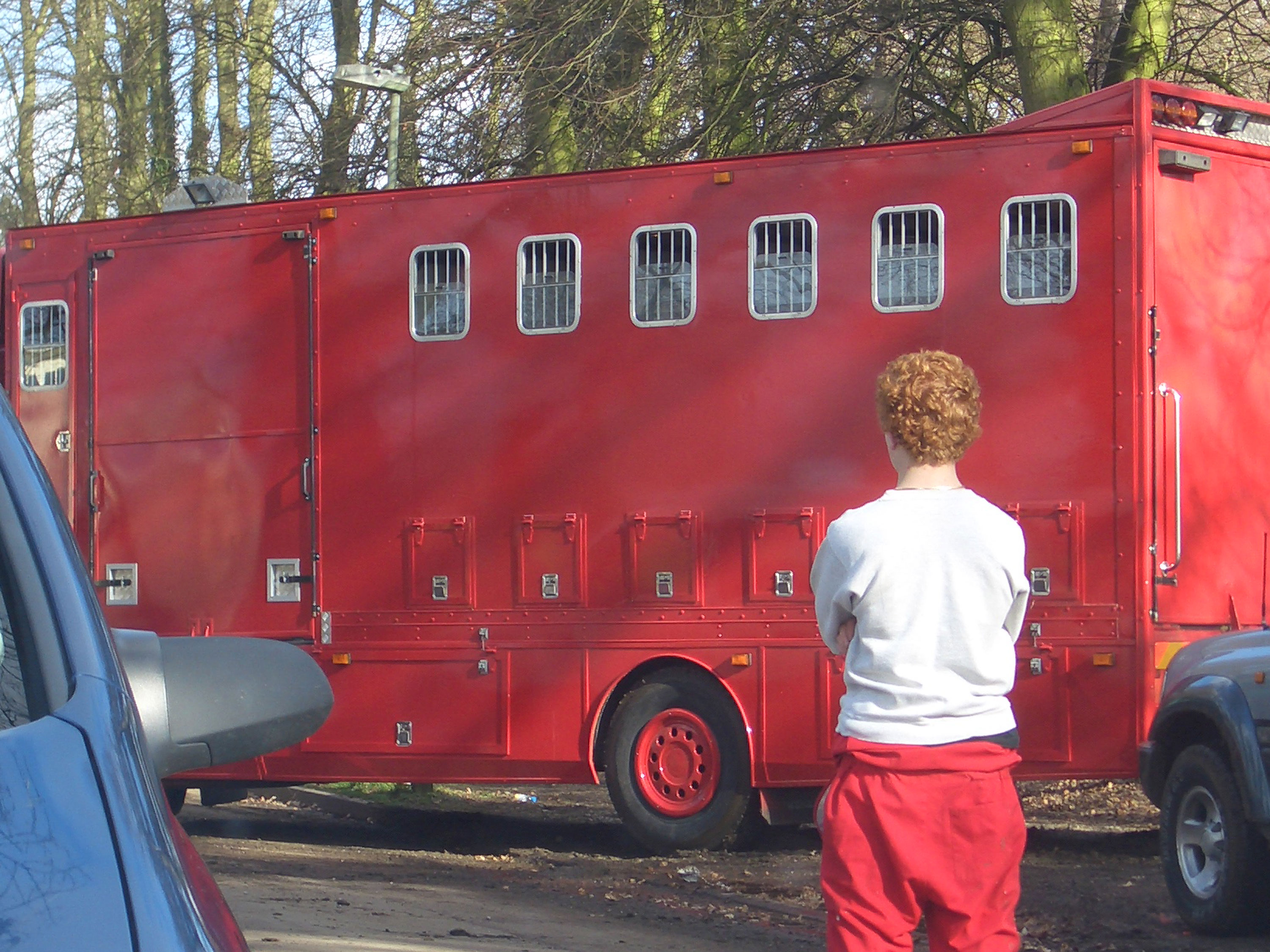
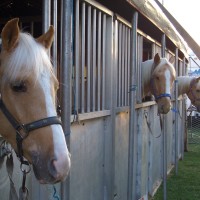
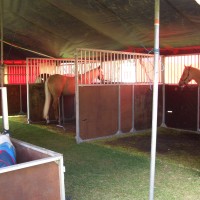
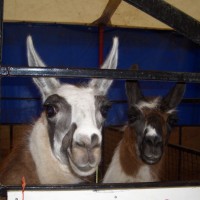
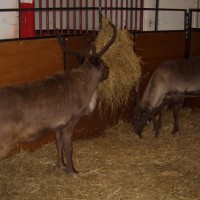
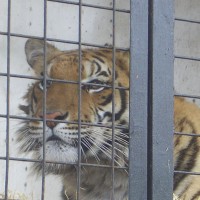
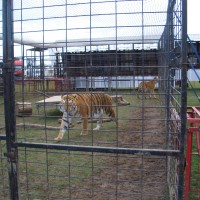
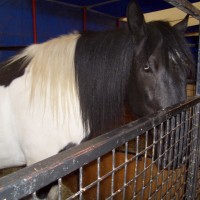
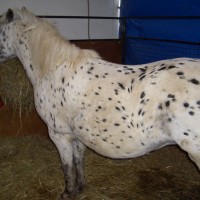
https://waterfallmagazine.com
I am genuinely happy to glance at this weblog posts which consists of tons
of helpful data, thanks for providing such data.